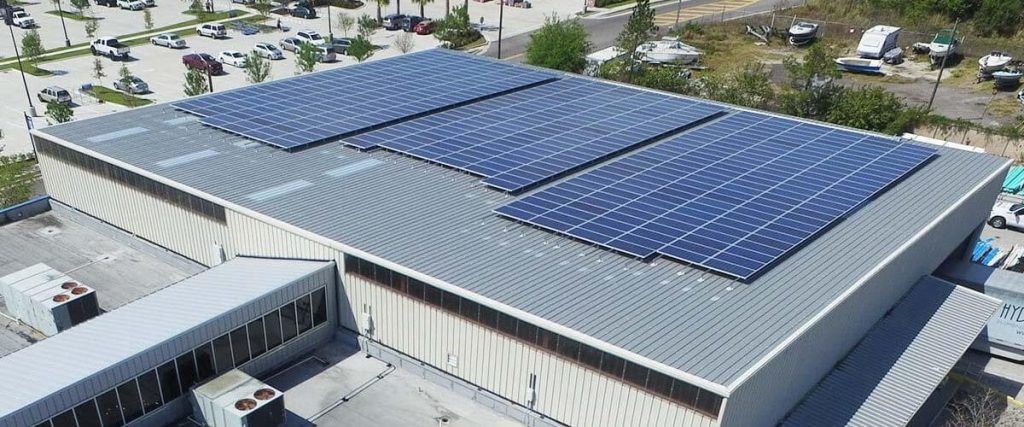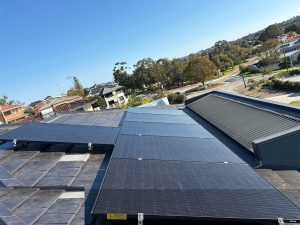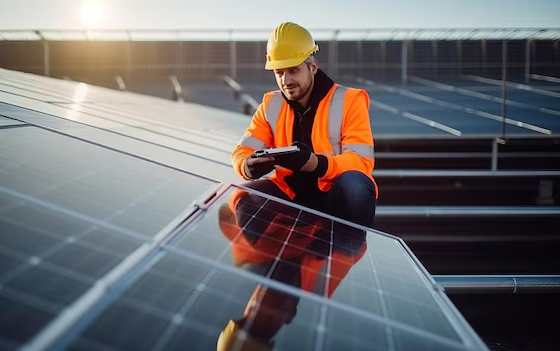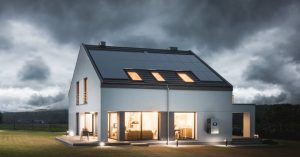Western Australia is exposed to some of Australia’s highest electricity costs. Here, electricity cost holds a larger percentage of operating costs. Most of the businesses in Western Australia operate between 9 AM to 5 PM. Therefore solar power provides a cost-effective alternative to electricity. Considering solar power for business is an ideal option in terms of its advantages. If you are concerned about your electricity bill; you should definitely consider making a switch to solar power for your business.
Solar power provides greater efficiency-per-watt to the customer. Moreover, it is investment-worthy and these are becoming cheaper in respect of installation costs. A feed-in tariff system makes solar power an economically viable option. It is a payment you get for feeding the surplus electricity that you generated to the local utility grid.
Clean Energy Regulator’s initiative on Solar Panel Validation makes it easy to confirm solar panels are backed by a manufacturer’s warranty. Further, this helps to check whether the product meets Australian standards and is eligible for Commonwealth incentives. Most solar panel companies offer a warranty. Normally, a solar panel’s performance warranty lasts up to 25 years.
Panel material warranties and workmanship guarantees are generally offered for five to ten years. According to the Australian Consumer Law (ACL), business commodities and services come with a range of consumer guarantees. Certainly, it is the retailer’s responsibility to address any failures that occur to meet these guarantees.
What are the benefits of commercial solar panels?
The prime advantage of commercial solar panels is that you can cut down the operating costs, particularly power bills. Energy sage reports a 75% reduction in operating costs after converting to solar power.
Switching to solar power helps you to cut down the overhead costs of your business by a significant margin. When less money spends on overhead, you can obviously improve your cash flow. Solar panels are an investment; not an expense.
The major driving fact on commercial solar is allowing businesses to deduct depreciable basis. This helps to reduce the tax liability and accelerate the rate of return on a solar investment. Solar energy is the future of energy. Consequently, converting to solar energy means you are making an investment in the future of your bottom line.
Choosing solar energy is a corridor to show your dedication to sustainability and the environment. In short, you can market your commitment to green energy to your customers. In general, commercial solar panels are hassle-free and it offers high reliability and low maintenances.
Rebates, grants, and Incentives for commercial solar
Financial viability is the prime hurdle when considering the installation of solar power. However, several schemes are available in Australia to support the financial need. For example, the Australian government announced the most comprehensive expansion of the Instant Asset Write-off scheme. This makes you eligible to claim an immediate deduction if you have purchased or planning to purchase commercial solar for your business.
In Western Australia, Small scale Technology Certificates (STCs) and large-scale generation certificates (LGCs) are available for less than 100 kW solar systems and over 100 kW solar systems respectively. Therefore the recommended suppliers will provide you with a point of sale discount if you choose to sign over your STCs or LGCs to them.
Federal Government- Economic Stimulus Package is available in Western Australia. This package has been announced to deal with the challenges posed by the pandemic in 2020. This package consists of two incentives; one is an increase in the instant asset write-off threshold from $30,000 to $ 150,000. Secondly, it offers Accelerated depreciation deductions. This will help to deduct an additional 50 percent of the asset cost in the year of purchase. Clean Energy Finance Corporation is working with Australia‘s leading financial institutions. Low-cost finance through this program can cover up to 100 percent of the cost of the equipment.
Commercial Solar installation cost and Pay Back Period in WA
The cost of commercial solar is determined by the network protection and associate engineering cost. A good quality commercial solar comes in the size break of over 30 KW and less than 100 KW will cost around $ 1000- $1300 per kW. A 20-30 kW solar system can get around $ 700 per kW.
In Western Australia, the payback period for a 10-20 kWh solar system is 4.3 years and its Internal Rate of Return is 24 %. The payback period for 20-30 kWh is 3.1 years and its IRR is 35%. Over 30 kWh solar system’s payback period is 2.5 years and it has 43% of IRR.
Understanding the commercial electrifying bills
There are a few fee components that make an appearance on most electricity bills. Firstly, retailer charges which is the rate that your electricity provider imposed on each unit of energy (in kWh) that you draw from the grid. The network charge is levied by the electricity network company and passed through to you by your retailer. It can charge either as a ‘flat rate’ or as ‘time of use’. A flat rate means the same rate is charged around the clock while in ‘time of use ‘different rates are charged depending on the time of the day. The above charges constitute the bulk of the average commercial bill, but additional charges may be imposed on a c/kWh basis. Demand charge means a customer is billed for the maximum amount of power that they draw from the grid during a period of time.
100 kW Commercial Solar System
Various distinct size breaks are available for commercial solar systems. First among these is less than 30 kW solar systems which contain up to about 100 panels. Secondly, 30 kW-100 kW solar systems require special systems to protect the grid from the electricity they generate and also demand special permission from local electricity networks. Among these, 100 kW solar systems are highly recommended for large manufacturing centers and organizations with high energy use.
This system is generally installed in areas like small to medium factories, wineries, large offices, and hotels. It usually consists of 380 to 410 PV panels. Each panel measures around 1.6mX1m which require a roof space of at least 656m2. 100 kW solar systems generate an average of 430 to 480 units per day. The average payback period of a 100 kW solar system is three to five years. The cost of 100 kW solar systems can range from $130,000 to $200,000. The rate may also vary depending on the brand.
Procedure for installing commercial rooftop solar system
Mount installation is the first step involved in the installation of a commercial rooftop solar system. Various types of mounts are available such as pole, roof –ground and flush mounts. It can be selected based on your requirement. Fixing the solar panels on the mounting structure is the second step. This is done by tightening nuts and bolts. Electrical wiring comes as the next step. Generally, MC4 connectors are used due to their feasibility with all types of solar panels. The next step is to connect the system to a solar inverter. The inverted is then connected to the solar battery and finally, the solar inverter connects to the main grid.
Related Articles:-
